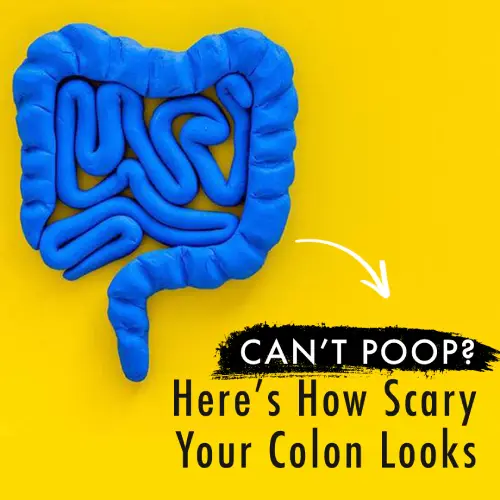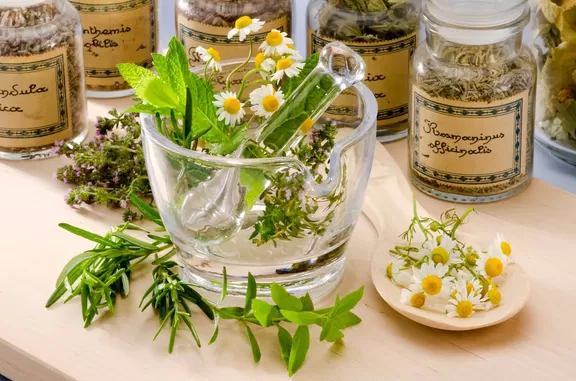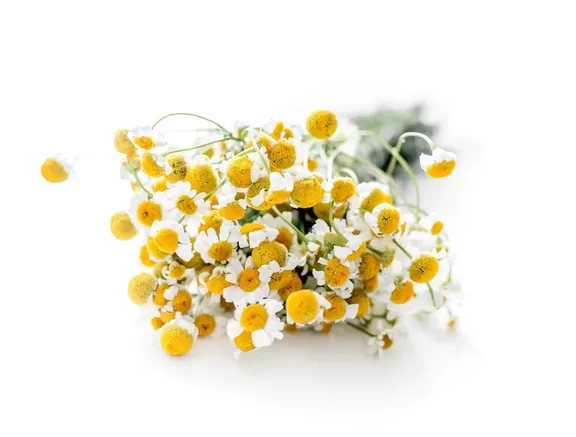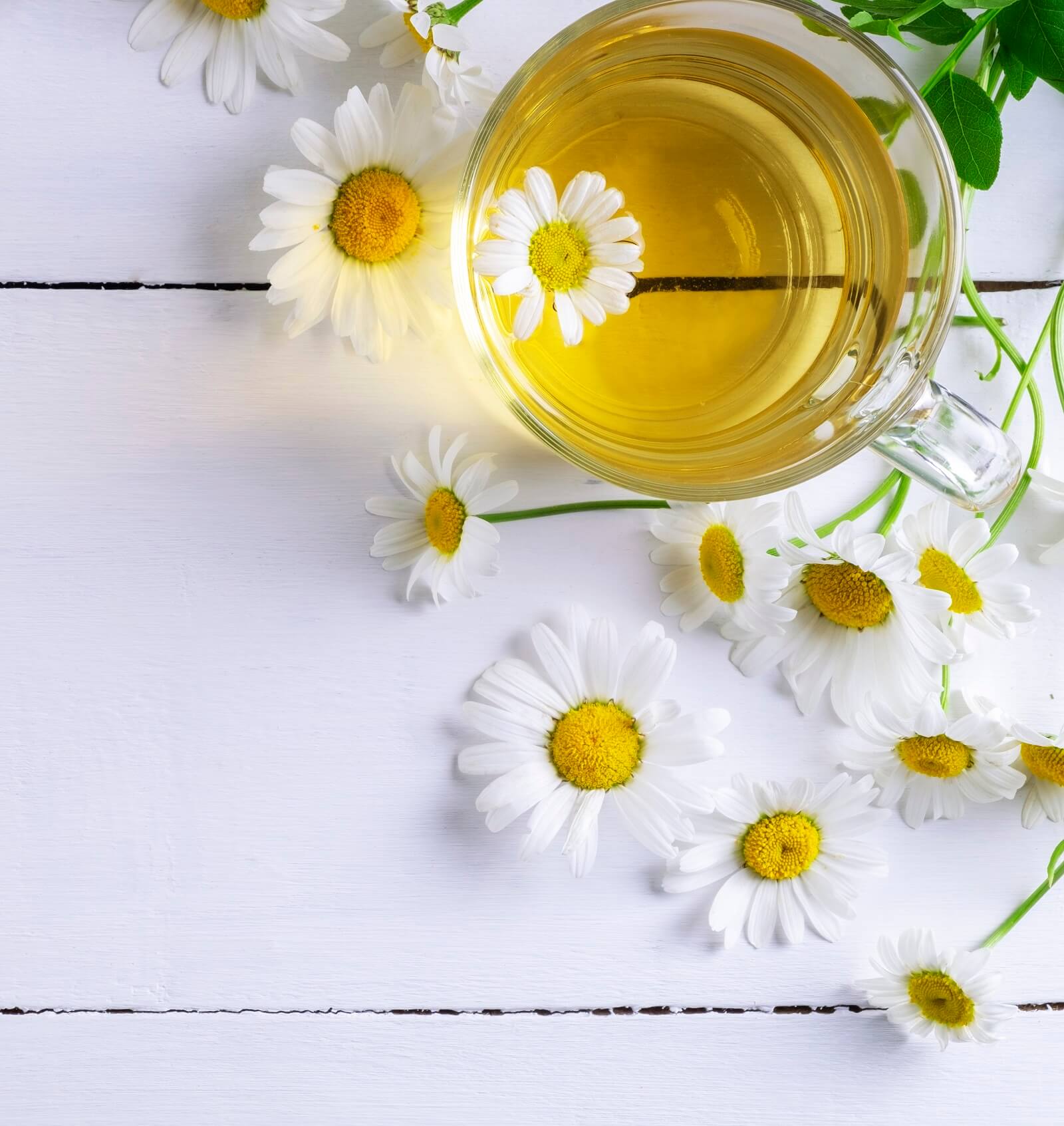
So a strong chamomile tea might be a great solution!
Chamomile is a versatile herb that can assist with hemorrhoids in a variety of ways. It contains a high amount of tannins; which are a natural astringent, drying chemical. It also helps reduce inflammation that can potentially cause damage to the rectal area. And, of course, chamomile is antibacterial and antifungal; allowing its users the ability to stave off possible infections.
There are two different species that are known as chamomile. But, most of the research seems to focus on German chamomile (Matricaria chamomilla — synonym Matricaria recutita L.). You may see German chamomile listed by various names.(source 4) The other type of chamomile is Roman chamomile (Chamaemelum nobile).
Dr. James A. Duke, in his book The Green Pharmacy Herbal Handbook,(source 1) said that the two aforementioned species are very similar; usually indistinguishable to an amature. Dr. Duke also said that for medical purposes, you might prefer using German chamomile.
Dr. Duke also states that chamomile can be used to help the blood not become too viscous. This may help with hemorrhoids; as hemorrhoids are a lot like varicose veins of the anus. Improved blood flow may help the swollen veins in the anal area to empty; allowing for an additional method of benefit for hemorrhoid sufferers.
One of the main reasons why chamomile is good for hemorrhoids is the high level of tannins in it. Tannins react with protein, and get their name from being used in the tanning industry. As one study, we will discuss states, tannins help to create a temporary "leather coat" on the surface of tissue.
Tannins also are astringent, and help tissue to release excess fluid. Because tannins can remove fluid from skin, tannins are widely used for treating weeping skin infections.(source 7)
Another main reason chamomile works well for hemorrhoids is due to their anti-inflammatory ability. Chamomile has been shown to inhibit cyclooxygenase (COX) enzymes. COX enzymes help to trigger the inflammatory response; and, by inhibiting these enzymes, inflammation is reduced.
Tannins can help to numb the area where they are applied. According to Dr. Duke, this herb contains a chemical called apigenin which has been shown to be three times as effective at relieving pain then the opioid drug papaverine. So if you also want some help relieving hemorrhoid pain, this herb should be able to provide some relief.
Finally, chamomile is also a proven antimicrobial herb. It has been investigated against common bacteria and fungi. Suffice it to say, it has been demonstrated to inhibit many of these pathogens. So, another reason why chamomile is a good choice for hemorrhoids is due to the herb’s ability to ward off infection.
Is Chamomile Tea Good for Hemorrhoids?
You will want to avoid drinking chamomile tea (as it is not the best for constipation) but you can use a strong tea of this herb externally
Concerning external, topical use chamomile should be good to use. But remember, if you are not using a strong decoction or potent tea, you will be getting less effects from this medicinal herb. The more concentrated your chamomile tea is, the more phytochemicals (plant chemicals) it will have in it. These phytochemicals are the reason why chamomile has its medicinal effects.
So why is chamomile tea not the best choice to drink for hemorrhoids? You may be wondering this, as it is a misunderstanding that the tea can help with constipation. But the fact is it doesn’t, and constipation is a root cause of hemorrhoids.
Chamomile tea is rich in tannins, and like all teas that have a lot of tannins, they should be avoided. Yet the topic and argument for why chamomile tea is bad for constipation is beyond the scope of this article. You can visit the link below to read the full article on this topic if you have time:
Chamomile for Constipation - Avoid this Herbal Tea
Naturally Treat Hemorrhoids in 48 Hours
Jessica Wright’s unique 5-step, all-natural approach to hemorrhoid treatment delivers permanent relief. Heal hemorrhoids in 48 hours, and eliminate the root cause in 30 to 60 days.
Benefit from Jessica’s 12 years of research; her book is backed by a 60 day, 100% money back guarantee.

A Study Documenting Chamomile Helps Hemorrhoids
A 2006 study in Planta Medica(source 2) made some very interesting and relevant discoveries concerning using chamomile for hemorrhoids.
The study sought to determine any possible therapeutic ability of an extract of chamomile flowers for people with hemorrhoids. To accomplish this, a trial of 24 patients with acute hemorrhoid bleeding was undertaken for 2 months. During this time the patients took 200 mcL/kg of body weight (microliters per kilogram of body weight).
The study states the molecular causes that lead to hemorrhoids primarily are the stagnation of blood in the vascular plexus of the anal cushions, damage to connective tissue, the stimulation of white blood cells, the release of free radicals, and the release of inflammatory substances.
The study found that in 21 of the 24 total patients, the severity and frequency of hemorrhoids was significantly reduced. Almost all complaints (such as bleeding, pain, and itching) were eliminated after a month of using the chamomile extract. The authors came to the following conclusion:
It seems possible that constituents in the extract fraction of chamomile flowers have significant potential to inhibit inflammation and, to increase micro circulation in the bowel, thereby ameliorating hemorrhoid and bleeding.
Planta Medica [72.11 (2006): P_181]
Samuel Bart’s Digestive Health Solution
Samuel Bart has always been passionate about plants and their ability to keep us healthy. He has put together some of the best natural ways that could help anyone support a healthy digestive system.
Samuel perfected an easy, yet powerful formula, which consists of amazing ingredients. Bart’s supplement is backed by a ironclad 60-day, money back guarantee.

Chamomile Helps Heal Hemorrhoid Wounds
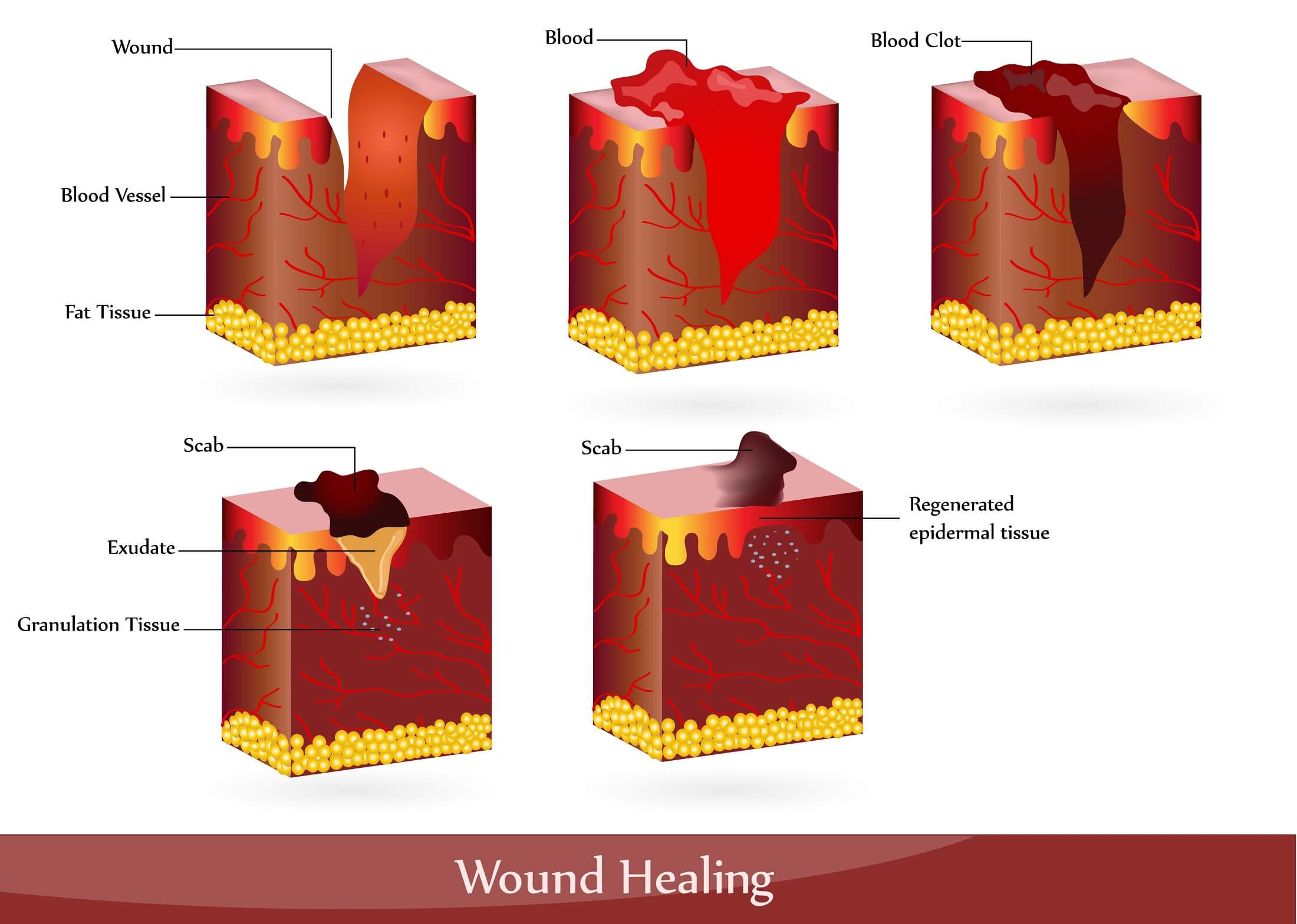
A 2009 study in Phytotherapy Research(source 3) looked at how chamomile would work as a wound healing herb. A major aspect of the study was to compare chamomile’s wound healing effectiveness against corticosteroids. The study stated that chamomile is known to be antibacterial, anti-inflammatory, and non-cytotoxic (not toxic to living cells).
The study employed 125 male rats to test the wound healing properties of chamomile; and, compare this herb’s efficacy against corticosteroids. The study stated, despite other options, daily administration of topical corticosteroids are the primary therapeutic approaches used to control the symptoms of inflammatory and ulcerous diseases.
Yet, the study also made clear that the prolonged or repetitive use of corticosteroids can cause adrenal suppression (Addison’s disease).
The rats were divided into five groups:
- Group 1, the control group (given no drugs)
- Group 2, the chamomile group
- Groups 3 to 5 were given different corticosteroids treatments (topical triamcinolone acetonide or clobetasol propionate cream or paste)
Rats were given ulcers and then given two daily applications of one of the medications every 12 hours. A portion of rats from each group were then sacrificed after 1, 3, 5, 7 or 14 days for examination.
The study found that all of the rats in the chamomile group sacrificed on the 5th day had 100% clinically evaluated wound healing. Yet, all the other treatment group rats sacrificed on the 5th day had 0% wound healing; i.e., not healed at all. On all other future sacrifice days in the study, rats in the chamomile group showed 100% wound healing.
By day 7, rats in the control group (given no treatment) had 40% wound healing; and, the best performing corticosteroid also showed 40% wound healing.
The study concluded that chamomile is a medicinal plant able to significantly improve wound healing by accelerating lesion healing in comparison to corticosteroid treatment.
A 2007 study in Journal of Wound Care(source 5) tested German chamomile extract on rats that were given wounds to ascertain the wound healing efficacy of this herb.
To prepare their extract the study used a blended powder of German chamomile flowers. 60g of this powder was suspended in 200ml of water for 24 hours. The mixture was then filtered and the resulting fluid was dried to arrive at a clear paste which was used as the extract.
The study used rats weighing 200 to 250g and gave them doses of 1, 2, 4, or 8g per kg of body weight to test for toxicity. Doses of up to 4g/kg of body weight did not show any signs of toxicity or mortality.
The study made surgical wounds, either an excision (12 rats) or dead space wounds (12 rats), on the rats. It should be noted that the rats were closely monitored for signs of infection. If an infection occurred the rats were removed from the study.
Rats in the group given chamomile were treated with a water based extract of German chamomile at a dose of 120 mg/kg (of body weight) each day.
On day 15 of the study rats given chamomile showed a greater reduction in their wound areas compared to those given only water (controls). Also, the wound breaking strength was greater and there was more granulation tissue (newly formed connective tissue and microscopic blood vessels) formed for the chamomile group rats.
The study concluded that their investigation demonstrated that German chamomile supports wound healing; possibly due to its antioxidant, immunomodulating (changing the immune system), oestrogenic (mimicking, or interfere with or inhibit, naturally occurring estrogens(source 6)), or other activity.
Dr. John Herzog (MD)
Dr. John Herzog, a "survival surgeon" from Maine explains what home remedies work best in a crisis situation.
This may be important in the event you require first-aid or are in an emergency situation without easy access to a hospital. Dr. John Herzog has assembled a large collection of home remedies for such scenarios.

Chamomile Contains Tannins that Help Skin
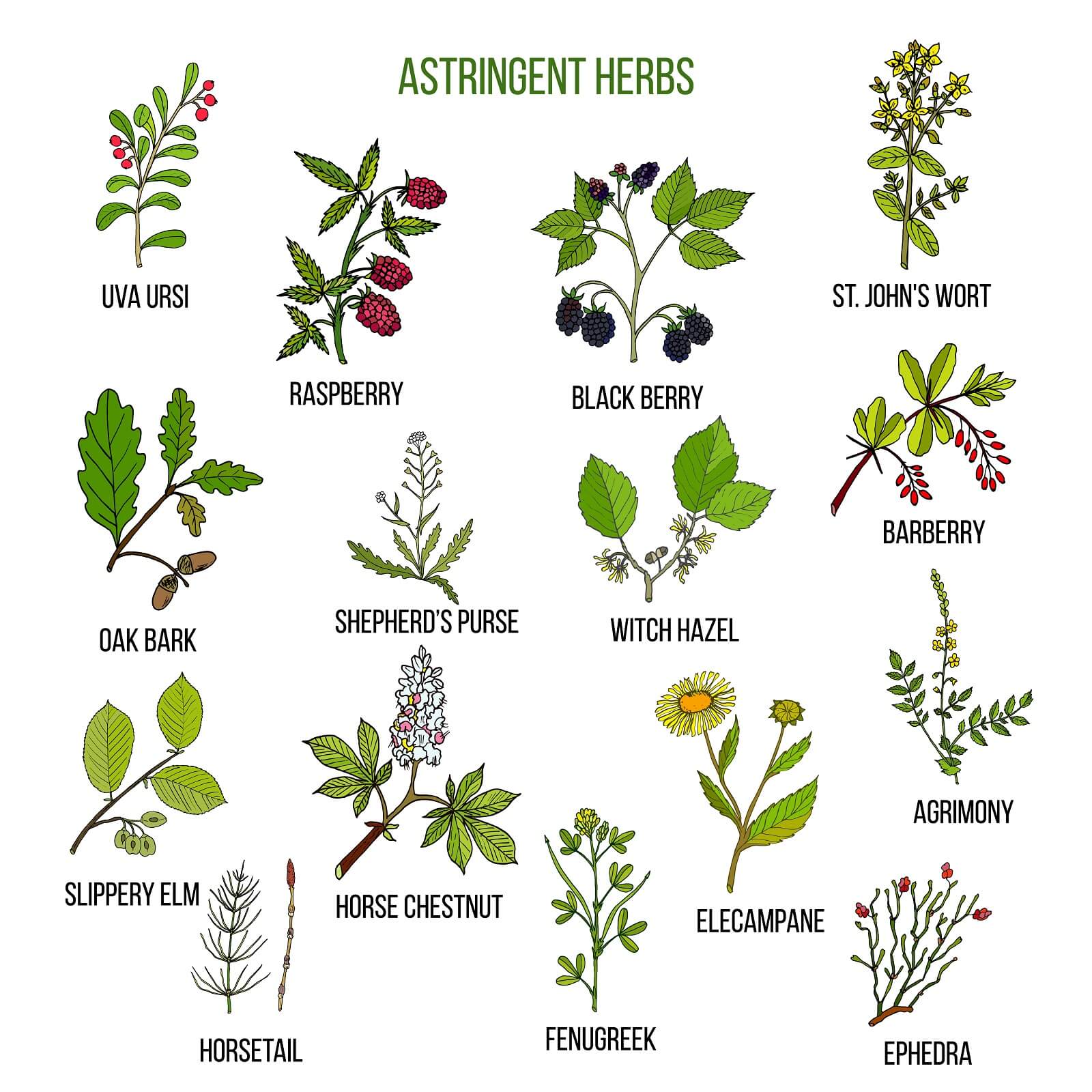
A 2007 study in Pediatric Dermatology(source 7) discussed the safety and efficacy of tannins in dermatology. The study confirms that tannins have astringent, anti-itch, and anti-inflammatory effects.
This study states that tannins have been used for hundreds of years for medicinal purposes; and, are very important in dermatology. Tannins have an astringent effect, are well tolerated, and have a good safety profile. Synthetic tannins are well known adjuvants (a substance that stimulates the immune response to an antigen; and, antigens are substances that elicit a response from the immune system) used for inflamed superficial skin problems.
Romm, et al., in chapter 3 of the 2010 book Botanical Medicine for Women’s Health,(source 8) outline the basic principles of employing tannins in herbal medicine.
According to this book, tannins are astringents; their basic action being to tone/tighten tissue. Tannins are able to denature protein molecules. Astringents like tannins produce a type of temporary "leather coat" on the surface of tissue.
As a result, tannins have several therapeutic uses. The book outlines these uses as:
- Creating a barrier against infection; which is particularly useful for burns and wounds.
- Reduce inflammation of surface tissue.
- Reduce irritation of surface tissue through a kind of numbing action.
A 2015 study in General Physiology and Biophysics(source 9) reported the tannin content of German chamomile. The tannin content was measured by using catechin (a common flavonoid found in plants; and can be found in tea) as a standard; it was expressed as mg of catechin equivalents (mg CtE/g dry weight).
The study stated that chamomile had high levels of tannins. The condensed tannins in this herb were 1.74 mg CtE/g dry weight.
Claire Goodall’s Amazing Guide
Clair Goodall is a bee-obsessed, natural medicine convert from Minnesota (USA). And, she does keep bees!
Clair has created 350+ page book documenting how to replace the toxic products and medications in your home with healthier, all-natural alternatives.

Chamomile is a Capable Anti-Inflammatory Herb
A 2009 study in Life Sciences(source 10) reported that chamomile has anti-inflammatory ability and inhibits (stops the action of) the enzyme inducible cyclooxygenase (COX-2).
To explain cyclooxygenase (COX) enzymes to some extent, and the role of COX-2 in inflammation, nonsteroidal anti-inflammatory drugs (NSAIDs) are potent anti-inflammatory agents that work by inhibiting COX. When COX is inhibited, the subsequent inhibition of prostaglandins (fatty substances that have hormone-like effects) at the inflammation site, occurs.(source 11)
Inflammation can result by the enzyme activity of COX-2. This enzyme produces chemicals that stimulate an inflammatory response—such as prostaglandin E2. Therefore, inhibition of COX-2 reduces inflammation.
This 2009 Life Sciences study(source 10) found that by inhibiting COX-2, chamomile reduced the release of prostaglandin E2 in macrophages (a type of white blood cell).
The inhibition of prostaglandin synthesis by interfering with COX enzymes is a common way NSAIDs work to reduce inflammation. Thus, chamomile should produce similar results given their ability to inhibit COX.
A 2012 study in the Journal of Essential Oil Bearing Plants(source 12) tested German chamomile on experimentally induced inflammation in rats. The study tested essential oil and a water based extract of this herb.
The study’s research indicated that chemical components of German chamomile can greatly inhibit inflammatory swelling. High doses of essential oil reduced swelling in two experiments by about 23% and 38%. High doses of water based extract reduced swelling in two experiments by about 54% and 34%.
Additionally, the study found that the herb had a remarkable inhibitory effect on prostaglandin E2. A high dose of the essential oil caused a 35% inhibition of prostaglandin E2.
The authors concluded that this herb has a powerful inhibitory effect on the inflammation response.
Chamomile Helps Disinfect Hemorrhoids
Chamomile is a capable antibacterial and antifungal herb. Because the anal area is prone to being in contact with various bacteria and fungi that reside in the colon; it is important to take steps to prevent infection. Suffice it to say, you not only get help reducing your hemorrhoids with chamomile, but you also get the added protection of reducing the chance of infection.
The topics of this herb’s bacteria and fungus fighting power are beyond the scope of this article. Yet, Herbsey does have two in-depth articles on these topics! Below are the links to view these two pages:
Side Effects of Chamomile
Common types of German and Roman chamomile flowers have the U.S. FDA’s generally recognized as safe (GRAS) status. Yet, there are some complications that can arise from chamomile to be aware of.
Chamomile might be able to induce labor by affecting the uterine muscles. And, chamomile may cause drug interactions with certain medications—such as the blood thinner warfarin. So, chamomile’s side effects and contraindications are more than just related to allergic reactions!
Herbsey has an entire article on the side effects of chamomile that also lists dosage guidelines. If you want to know how much chamomile to take, and situations where it probably isn’t safe, check out this article: Side Effects & Dosage Guidelines for Chamomile.
Heal Hemorrhoids Naturally in 48 Hours
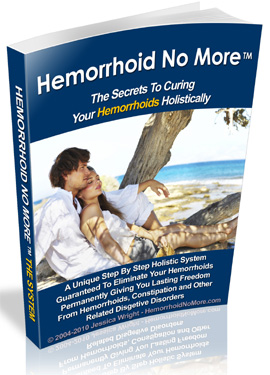
If you have tried "everything" to treat hemorrhoids, including surgery, but it didn’t work—your’re not alone. Jessica Wright experienced this same hardship due to hemorrhoids. But, with extensive research and understanding of natural medicine, she developed a solution to permanently end her hemorrhoids.
Jessica Wright wrote an entire book detailing exactly how to replicate her success. Also, it appears "Jessica Wright" is probably a pen name for a woman—and author—named Linda Allen. Linda suffered from recurrent yeast infections as well, maybe at the same time as she had hemorrhoids. She turned to natural medicine for answers when medical doctors and their solutions could not help.
Jessica’s story is one of severe and chronic hemorrhoids. It involves routine doctor’s visits, prescription medications / creams, significant suffering from hemorrhoids, and even a two hour hemorrhoids surgery (stapled hemorrhoidopexy). Yet, 12 years of these treatments didn’t resolve Jessica’s hemorrhoids.
Despite these setbacks, Jessica didn’t give up; instead, she turned to natural medicine and diligent research. Skipping to the end of Jessica’s story, she would develop a natural method to treat hemorrhoids that worked brilliantly.
After Jessica put together her treatment protocol and used it, she found her hemorrhoids completely disappeared. And, they stayed gone. Something her doctor was not able to do. Yet, all it took was the right natural therapeutic approach.
Jessica also gave her treatment approach to others; and, they experienced the same exceptional results. Typically, Jessica’s system provides dramatic relief of hemorrhoids in just 48 hours. And, the root cause of hemorrhoids is fixed within 30 to 60 days.
A company selling hemorrhoid symptom products does not want their customer base diminished. Consequently, unpatentable natural medicine does not get much attention or publicity.
So, how can you know if Jessica Wright’s claims are legitimate and not a scam? That is a great question. Here are 3 important reasons why Jessica’s book is legitimate:
- It is published by a large U.S. based company (Located in Idaho) known as ClickBank. ClickBank handles all the sales and refunds of many products like Jessica’s. They do business in many countries; and, have been in business for many years.
- ClickBank provides a 60 day, 100% money back guarantee on all their products, Jessica’s book included.
- If you are not satisfied with Jessica’s book you can simply contact ClickBank (they make it very easy) for a full refund.
Jessica’s story is more in-depth than this concise overview. And, there are additional bonuses Jessica provides with her book. If you’d like to find out more about Jessica’s personal story or her hemorrhoid treatment; you can learn more at Jessica Wright’s website.
About the Author
Nick Gross is a natural medicine enthusiast who has been researching and writing about natural medicine since 2008. Nick is primarily a web developer, but also researches and authors written and video content about natural health. Nick has a bachelor’s degree in Management Information Systems from the University of Northern Iowa.
More on Nick GrossImportant Disclosures & Disclaimers
It is important to use the information you find on Herbsey.com in the right way. Also for legal reasons, these disclaimers and disclosures are necessary. For further information about each, feel free to click the link provided to the page on this website that provides more information.
Medical Disclaimer
The information on this website is not a prescription for anyone. This information is for informational or educational purposes only, and is not a substitute for professional medical advice or consultations with healthcare professionals.
Advertisement Disclosure
Some of the links provided on this article and website are affiliate links. If you purchase a product after clicking on these links, Herbsey.com will earn a commission. Herbsey.com promotes various products through advertisement and text links. For more information: Our Advertisements.



